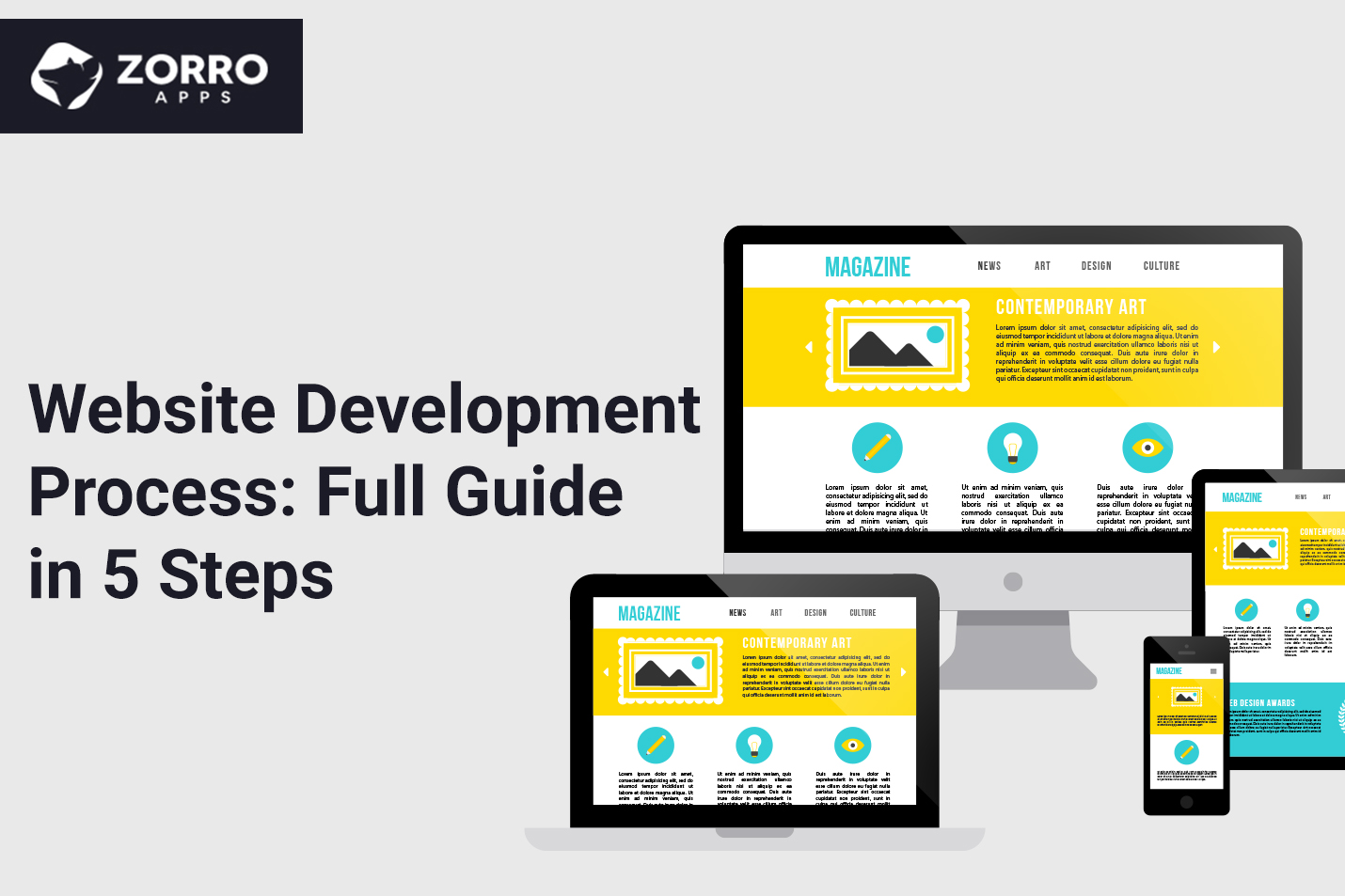Website Development Process: Full Guide in 5 Steps

Currently, website development for any business has become a critical aspect of online branding and marketing. Once you've determined to make a website or web application, some precise procedures must be followed. It's crucial to follow this method step by step, as neglecting a single detail can lead to a slew of unexpected issues later.
The following are the necessary steps in the web development process to help you create a professional-looking website.
Research and Discover
There can be no good planning if the project details are not apparent at an early stage. It may cause the website's ultimate purpose to be missed or trigger revisions resulting in a more extended timeframe and budget. You can use this information, such as product components, competition features, and industry demand to begin planning for your website development.
Planning
It is the most significant state in the whole procedure. Planning entails placing all of the information obtained in the first stage into a cycle that will guide the entire project. It involves dividing the data into distinct areas for design, content, and programming. Once you've figured everything out, you'll be able to start putting together specific plans for each of the necessary teams. Other crucial decisions such as developing the content structure and sitemap, wire framing, layout planning, and UI and UX design can also be made based on planning.
Implement & Develop
At this point, most individuals usually add three independent steps: first for design, second for programming, and third for content.
- Design: Design is the initial phase in the production process by default; any programming or content development will be poor without design.
- Programming: When working on technically complicated online projects, the programming process can begin before the design phase.
- Content Creation: The production of content is the third step in the implementation process. The material should be created and optimized in the same tone and language as the rest of the industry..
Testing and Launching
There should be a series of rigorous, precise, and repetitive tests before deploying the website to a server to eliminate bugs. The quality assurance team should test functionality, usability, compatibility, performance, and other factors. Everything needs to go off without a glitch.
After ensuring that your website is error-free, it gets released to the public by stationing it to your server, making it available to you, your team, and users.
Post-Launch and Maintenance
After launching a website, there is still work left. Website upkeep, routine updates, and even new features are unavoidable. It can be made more convenient by collecting feedback from website visitors. Maintenance, as the final step, is all about continuing to maintain and improve your project. At the same time, it will provide you peace of mind knowing you will not be left alone once the project is over.
Related Topic:
http://www.zorroapps.com/10-best-web-design-trends-for-2021-that-you-shouldn't-miss
It requires more than code to develop a web application. Web development comprises numerous critical stages that one should follow. Consider each phase important in the website creation process is, no matter how small or large the project is. These stages will help you remain on top of the entire process; understand why and how things work..